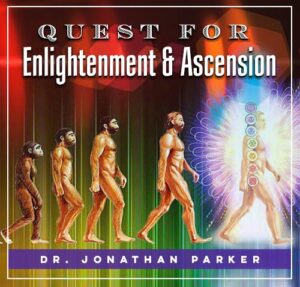How Does the Brain Integrate Information for Consciousness?

Before diving in, please note: This post is for informational purposes only. If you’d like to know more about how we approach topics, feel free to check out our friendly Disclaimer Page.
Hey there, amazing readers! 🖐️ Just a quick note: yes, we know there are a lot of ads here. Trust us, we get it—it’s not the prettiest look, but they help us keep this blog alive and kicking. Those pesky little ads cover the costs of all the behind-the-scenes magic, from hosting and tech stuff to creating content we hope you’ll love.
We’re committed to delivering quality posts, and your support (even just sticking around despite the ads) means everything to us. So, bear with us, and thanks for helping us keep the good vibes rolling. Now, on to the fun stuff! 😉
TRANSLATE BUTTON AT THE END OF THE ARTICLE
Introduction to Brain Information Integration
The brain is a remarkable organ that serves as the epicenter of human consciousness and cognition.
It seamlessly processes vast amounts of information from the environment and internal stimuli to create our conscious experience.
The integration of this information is crucial for various cognitive functions, such as perception, memory, decision-making, and self-awareness.
Understanding how the brain integrates information for consciousness is essential for unraveling the mysteries of the mind.
Neurons and Synapses in Information Processing
At the core of information integration in the brain are neurons and synapses, the fundamental building blocks of the nervous system.
Neurons transmit electrical signals, while synapses are the connections between neurons where information is exchanged through neurotransmitters.
The intricate network of billions of neurons and trillions of synapses allows for the rapid processing and transmission of information throughout the brain.
This neural communication forms the basis of cognitive functions and conscious awareness.
Role of Neural Networks in Consciousness
Neural networks play a vital role in integrating information for consciousness.
These interconnected networks of neurons work together to process sensory inputs, retrieve memories, make decisions, and regulate emotions.
Different brain regions are specialized for specific functions, and their coordinated activity is essential for generating conscious experiences.
Neural networks enable the brain to integrate information from various sources and create a unified perception of the world.
Sensory Inputs and Cognitive Processing
Sensory inputs from the environment, such as sight, sound, touch, taste, and smell, are crucial for cognitive processing and consciousness.
The brain receives these sensory signals and processes them through specialized areas, such as the visual cortex, auditory cortex, and somatosensory cortex.
These regions analyze the sensory information and integrate it to create a coherent perception of the external world.
Cognitive processing involves higher-order brain functions that allow us to interpret, remember, and respond to sensory inputs effectively.
Integration of External and Internal Stimuli
In addition to external stimuli, the brain also integrates internal stimuli, such as thoughts, emotions, and memories, for consciousness.
Internal stimuli are generated within the brain and influence our perception of the world.
The integration of external and internal stimuli is a complex process that involves multiple brain regions working together to create a unified experience.
This integration allows us to make sense of our surroundings, form memories, and engage in complex cognitive tasks.
Hierarchical Organization of Brain Regions
The brain is organized into a hierarchical structure of interconnected regions that specialize in different functions.
Lower-level brain regions process basic sensory information, while higher-level regions are responsible for more complex cognitive processes.
This hierarchical organization allows for the integration of information across different brain regions and facilitates the coordination of cognitive functions.
The intricate connections between brain regions enable seamless communication and information exchange for consciousness.
Synchronization for Coordinated Activity
Synchronization of neural activity is essential for coordinated information processing in the brain.
When different brain regions synchronize their activity, they work together more effectively to integrate information and generate conscious experiences.
Synchronized neural activity is crucial for tasks that require multiple brain regions to cooperate, such as attention, memory, and decision-making.
This coordination ensures that the brain functions as a unified system, rather than disparate regions working in isolation.
Memory Consolidation and Retrieval
Memory consolidation and retrieval are integral aspects of information integration for consciousness.
The brain stores and organizes memories through complex neural networks that link related information.
When we recall a memory, the brain retrieves stored information and integrates it into our conscious experience.
Explore the Path to Spirituality and Enlightenment – Start Here.
Memory consolidation strengthens neural connections over time, making it easier to retrieve information when needed.
This process of memory integration is essential for learning, problem-solving, and self-reflection.
Attention and Focus in Information Integration
Attention and focus play a crucial role in information integration for consciousness.
The brain selectively attends to relevant stimuli while filtering out distractions to maintain focus.
Attention enables us to process and integrate information effectively, leading to coherent perceptions and meaningful experiences.
Focused attention is essential for cognitive tasks that require sustained mental effort, such as reading, problem-solving, and decision-making.
By directing attention to specific stimuli, the brain optimizes information processing and enhances conscious awareness.
Decision Making and Executive Function
Decision-making and executive function rely on the integration of information from various sources to guide behavior and actions.
The brain’s executive functions, such as planning, problem-solving, and self-control, involve complex cognitive processes that require integrating and prioritizing information.
Decision-making is a multifaceted process that involves evaluating options, predicting outcomes, and selecting the best course of action.
The brain integrates information from past experiences, current stimuli, and future goals to make informed decisions and achieve desired outcomes.
Neural Plasticity in Learning and Adaptation
Neural plasticity is the brain’s ability to reorganize itself by forming new neural connections in response to learning and experience.
This adaptability allows the brain to integrate new information, acquire new skills, and change behavior over time.
Neural plasticity underpins learning, memory, and adaptation by enabling the brain to rewire its neural circuits in response to environmental demands.
The brain’s capacity for plasticity ensures that it can continually integrate new information for consciousness and adapt to ever-changing circumstances.
Conscious Awareness and Self-Reflection
Conscious awareness and self-reflection are higher-order cognitive processes that involve the integration of information about oneself and the surrounding world.
Self-awareness allows us to reflect on our thoughts, emotions, and actions, leading to introspection and self-discovery.
Conscious awareness enables us to perceive our environment, make informed decisions, and engage in meaningful interactions.
The integration of internal and external stimuli for consciousness fosters self-reflection, empathy, and a deeper understanding of oneself and others.
Conclusion
In conclusion, the brain integrates information from various sources to create our conscious experience.
Neurons and synapses process information, neural networks coordinate activity, and sensory inputs contribute to cognitive processing.
The hierarchical organization of brain regions, synchronization of neural activity, and memory consolidation play crucial roles in information integration for consciousness.
Attention, decision-making, and executive function rely on the brain’s ability to integrate information effectively.
Neural plasticity enables learning and adaptation, while conscious awareness and self-reflection foster introspection and self-discovery.
Understanding how the brain integrates information for consciousness is essential for unraveling the mysteries of the mind and advancing our knowledge of cognitive processes.

The Enlightenment Journey is a remarkable collection of writings authored by a distinguished group of experts in the fields of spirituality, new age, and esoteric knowledge.
This anthology features a diverse assembly of well-experienced authors who bring their profound insights and credible perspectives to the forefront.
Each contributor possesses a wealth of knowledge and wisdom, making them authorities in their respective domains.
Together, they offer readers a transformative journey into the realms of spiritual growth, self-discovery, and esoteric enlightenment.
The Enlightenment Journey is a testament to the collective expertise of these luminaries, providing readers with a rich tapestry of ideas and information to illuminate their spiritual path.
Our Diverse Expertise 🌟
While our primary focus is on spirituality and esotericism, we are equally passionate about exploring a wide range of other topics and niches 🌍📚. Our experienced team is dedicated to delivering high-quality, informative content across various subjects ✨.
To ensure we provide the most accurate and valuable insights, we collaborate with trusted experts in their respective domains 🧑🏫👩🏫. This allows us to offer well-rounded perspectives and knowledge to our readers.
Our blog originally focused on spirituality and metaphysics, but we’ve since expanded to cover a wide range of niches. Don’t worry—we continue to publish a lot of articles on spirituality! Frequently visit our blog to explore our diverse content and stay tuned for more insightful reads.






